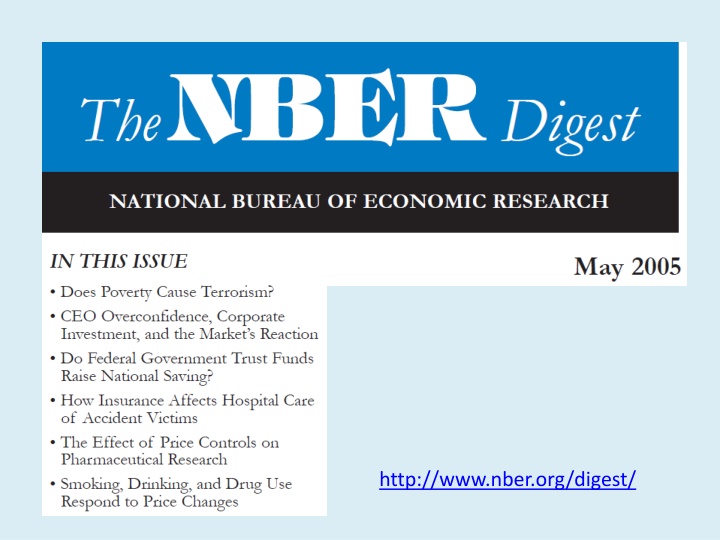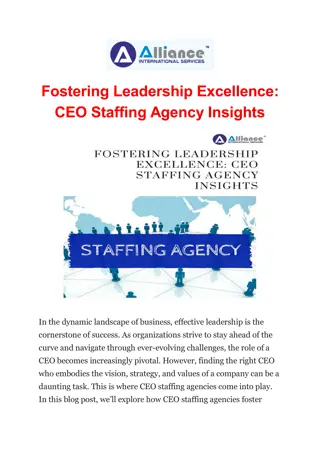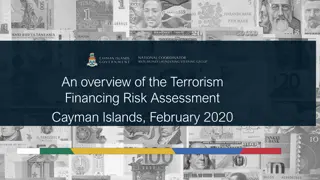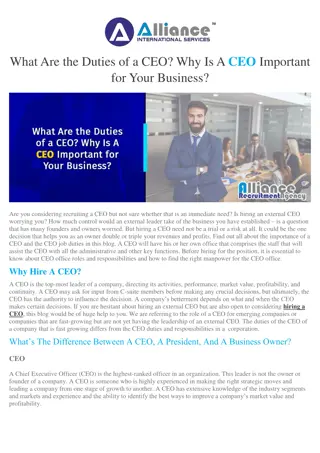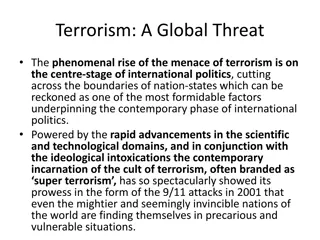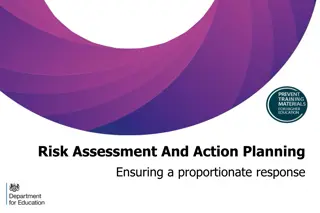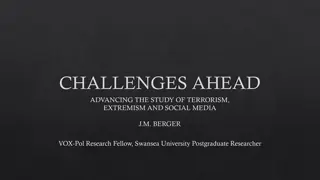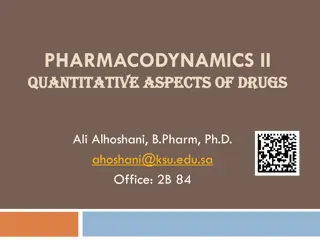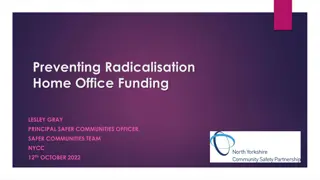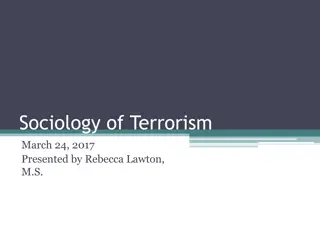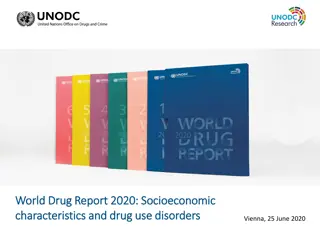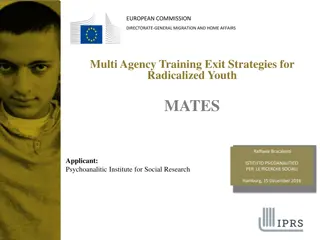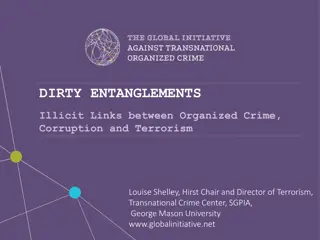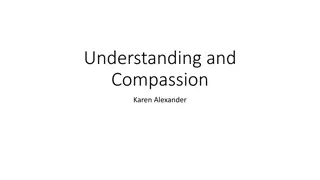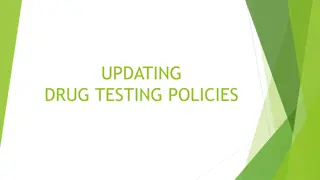In-Depth Analysis of Terrorism, CEO Behavior, and Drug Regulations
The article delves into the complex relationships between poverty and domestic terrorism, CEO overconfidence and corporate investment decisions, and the impact of price changes on smoking, drinking, and drug use. It highlights the nonlinear nature of these phenomena and the importance of considering multiple factors in understanding causality. The regression models used shed light on how political rights, CEO traits, and price fluctuations influence outcomes in these realms.
Download Presentation

Please find below an Image/Link to download the presentation.
The content on the website is provided AS IS for your information and personal use only. It may not be sold, licensed, or shared on other websites without obtaining consent from the author.If you encounter any issues during the download, it is possible that the publisher has removed the file from their server.
You are allowed to download the files provided on this website for personal or commercial use, subject to the condition that they are used lawfully. All files are the property of their respective owners.
The content on the website is provided AS IS for your information and personal use only. It may not be sold, licensed, or shared on other websites without obtaining consent from the author.
E N D
Presentation Transcript
Does Poverty Cause Domestic Terrorism? Who knows? (Regression alone can t establish causality.) There does appear to be some level of positive association. But the level of political freedom within a nation also plays a role. The article states: the relationship between the level of political rights and terrorism is not a simple one. Countries with an intermediate range of political rights experience a greater risk of terrorism than countries either with a very high degree of political rights or severely authoritarian countries with very low levels of political rights. This clearly signals a nonlinear relationship (a downward-bending U ), and suggests adding the square of the political rights variable to a model which predicts a nation s level of domestic terrorism. And indeed, this is what the author did.
The second appendix to the full article reports the following regression (the no rights variable takes values between 1 (great political freedom) and 7 (an oppressive authoritarian regime)): Regression: log(Global Terrorism Index) constant log(GDP/cap) no rights (no rights)2 something -0.0948 0.2966 -0.0300 something 0.0434 0.1073 0.0127 something 3.0491% 24% coefficient std error of coef significance adjusted coef of det 0.6422% 1.9451% there s strong evidence that the squared variable belongs in the relationship (from the significance level of the squared term) the no-rights variable relates to domestic terrorism in the form of a downward-bending U (the coefficient of the squared term is negative) the U peaks at a no-rights level of 0.2966/(2 (-0.0300)) = 4.94 (using the b/(2c) formula), i.e., between the extremes, as seen in this chart from the article.
CEO Overconfidence, Corporate Investment, and the Market s Reaction The next article examines the link between the personal characteristics of a CEO, and his/her propensity to invest corporate resources unwisely. It reports (in the middle of the second column): overconfidence among acquiring CEOs is one important explanation of merger activity. Using a dataset of large U.S. companies from 1980 to 1994 and the CEOs personal portfolio decisions as measures of overconfidence, they find that overconfident CEOs conduct more mergers and, in particular, more value- destroying mergers. These effects are most pronounced in firms with abundant cash or untapped debt capacity. In other words, the effect of CEO overconfidence on overinvestment in value- destroying merger activity depends on the availability of ready financial resources (waiting to be misspent). What we have here is an interaction, captured in the regression model by the introduction of the product of the overconfidence and ready financial resources variables.
Smoking, Drinking, and Drug Use Respond to Price Changes Finally, the last article, suggests that legalization and taxation (of currently- illegal drugs) the approach that characterizes the regulation of cigarettes and alcohol may be better than the current approach. It notes (starting at the bottom of the first column on the last page of the Digest): Alcohol use and abuse cannot be correlated indisputably with reductions in the real prices of alcoholic drinks without factoring in other elements. These include changes in the minimum legal drinking age and the redefining of blood-alcohol levels in regard to drunk driving. However, when these factors are taken into account, the 7 percent increase in the real price of beer between 1990 and 1992 attributable to the Federal excise tax hike on that beverage in 1991 explains almost 90 percent of the 4- percentage-point reduction in binge drinking in that period. Clearly, a direct regression of binge drinking onto real price of alcoholic drinks suffers from specification bias, and fails to accurately capture the true effect of price on alcohol abuse. But, when the confounding variables legal drinking age and illegal blood-alcohol level are taken into account, the price effect is clearly revealed in the resulting more complete model.
